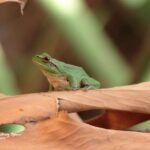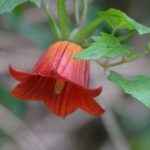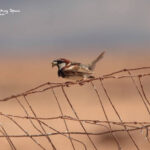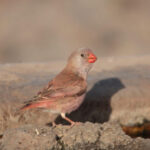Birdwatching and wildlife tours in Spain
Wildlife trip report to the Canary islands
Recce trip-Wildlife trip report to the Canary Islands (Tenerife and Fuerteventura) March 30th – April 5th 2018
It has been my second wildlife trip to the wonderful Canaries Islands, a great opportunity to visit other less-known places and to put together an itinerary we will run next year in late winter.
Day 1: Valencia-Tenerife Sur (Wildlife trip report to the Canary Islands)
After a late flight from Valencia to Tenerife Sur Airport, we head off with the rented car to a Rural Hotel in Güímar. We are looking forward to start our wildlife adventure in the Canary islands!
Day 2: El Teide and Erjos (the highest mountain in Spain)
At dawn, we are soon woken up by the songs and calls of the numerous birds that live in the hotel’s orchards. Among the avocados, Atlantic Canaries build their nests and the endemic Canary Islands chiffchaffs sing and flick their wings displaying. After a nice breakfast, we are off to the Canary pine forest near the Orotava to look for some endemic forest birds. Soon, we bump into a distinctive local form of Common Chaffinch F. c. tintillon. We continue walking for 10-15 minutes to get away from the crowds who are enjoying barbecues, a popular pastime in Easter. Near a stream, we find two Tenerife (African) Blue Tit C. t. teneriffae, a Tenerife Kinglet and a Common darter dragonfly.
Later we drive towards the impressive Teide. No wonder that this National Park gets 4 million visitors per year!!! It is an impressive volcanic landscape with different lava formations each few hundred meters. As we have the picnic, numerous Tenerife Lizards get closer and closer to us, hoping to be fed by tourists. We continue our journey towards the Parador to find there our first of many Berthelot’s pipits, and also the endemic subspecies of Common Buzzard B. b. insularum. From a viewpoint, we see another Macaronesia endemic, the Plain Swift.
Finally, our last visit of the day is in the pools of Erjos. We don’t see many birds, probably because there are dogs swimming in the pools. We just add Common coots and Barbary partridge. However, there are some interesting and nice flowers which make worth the stop. Among them Argyranthemum frutescens, Bituminaria bituminosa, Mercurialis annuus, Canary Samphire (Astydamia latifolia), Aeonium canariense and Euphorbia aphylla. Regarding dragonflies, Blue emperor and Red-veined darter are seen.
Day 3: El Teide, viewpoint and Punta de Teno (Wildlife trip report to the Canary Islands)
During our pre-breakfast walk around the orchard, we find a beautiful Stripeless tree frog resting in a pond. Besides, we see some insects: a Broad scarlet dragonfly and a Canary Speckled Wood. Our first birs is a Turtle dove perched on the top of the stem of an Agave americana.
Our first stop of the day is for the endemic Blue chaffinch at Las Lajas. Soon, we get an approachable beautiful male. Then, we drive for 45 minutes to a well-known viewpoint for the endemic pigeons on the West coast. The downside of this place is the constant traffic along the TF-5 but it is a reliable place for Laurel Pigeon. After 15 minutes, we get a distant bird flying over the vegetation.
The next stop is a small patch of laurel forest where we find two distant Bolle’s pigeons and some interesting laurel forest plants: Echium giganteum, Silene gallica and Limonium fruticans.
Today’s final destination is Punta de Teno. Due to access restrictions, we have to take a bus to reach this rocky lava habitat known as ‘malpaís’. It is midday and temperature is quite high (25ºC) and this might be the reason why it is so quiet. Nevertheless, we manage to see in the scope a distant group of 50 or so Cory’s Shearwaters. Regarding plants, some remarkable species are Reichardia crystalina, Monanthes laxiflora and Euphorbia canariensis.
Our rural hotel is not serving dinner today due to some improvement works, so we head off to El Puertito to have some excellent Canary food. We try almogrote (goat cheese with red pepper), fish and papas with mojo picón. Around the harbour, we find Whimbrel, Grey Wagtail, and Turnstone.
Day 4: Anaga, Los Rodeos, and flight to Fuerteventura (Wildlife trip report to the Canary Islands)
Today is our last day in Tenerife as the plan is to take a flight to Fuerteventura during the evening.
After breakfast, we drive North to the Anaga area and as nearly always happen there, the laurel forest is cover by clouds. This is the wettest area in Tenerife, the trade winds (‘vientos alisios’) blow from the sea carrying moisture. Nevertheless, we walk along an interesting path covered by Azores Laurel, Canary Strawberry Tree, and Tree Heather, watching our first Canary Islands Robin. Later, we drive down towards the sunny coast for some more plants and birds. Along the path, we find a Sardinian Warbler as well as a nice variety of flowers and endemic plants. Among them the stunning Canary Bell flower, Dragon-tree, Echium leucophaeum and Lavandula buchii. Other beauties include Echium simplex, Limonium arborescent, Monanthes wildpretii and Lotus dumentorum.
After lunch, we set off to Los Rodeos, near the airport, to see some fine patches of Gladiolus italicus. Corn buntings sing from the fences and we try to locate unsuccessfully a Quail.
Around 7:20 pm we board to the plain and 50 minutes later we land in a completely different landscape in Fuerteventura. After getting our rental car, we head off to the Hotel.
Day 5: La Antigua, Los Molinos and West coast (Wildlife trip report to the Canary Islands)
Once we have breakfast, we visit a pool near La Antigua. This green area is a magnet for both resident and migrant birds. As soon as we arrive, we find Ruddy shelducks, the local race of Great grey shrike L. e. koenigi and a Little ringed plover. Among the grass, Pau finds a bird that turns out to be a Wryneck. Most of the sightings of this uncommon migrant are recorded in the Eastern islands (Lanzarote and Fuerteventura) which are closer to the African coast.
On the sky, we find a ‘Guirre’ local name for the endemic race of Egyptian vulture N. p. majorensis. There are around 65 breeding pairs in Fuerteventura and a total population of 300 birds. This amazing raptor is recovering from a near extinction in the 80’s. One of the main differences from their European cousins is that the Fuerteventura ones do not migrate during winter, thus they can be found all year around.
On the way back to the car, five Black-bellied Sandgrouses fly off scared by the presence of a Common Buzzard.
Our next stop is near Los Molinos. There, we find a confident group of Spanish sparrows carrying damselflies on the bill. We also get to see Greenshank, Common Sandpiper, Northern Wheatear, and our first Barbary Falcon. In addition, there were a couple of Lesser emperors mating, Blue-tailed damselflies, and several Atlantic Lizards. We decide to drive few kilometres to have the picnic and while Virginia enjoys great sea views. Meanwhile, Pau plays hide-and-seek with a Spectacle warbler and a Barbary squirrel. This mammal was brought in 1965 from Sidi ifni (Morocco) and since then, they have multiplied causing conservation problems.
After lunch and coffee, we head North to our next stop. Our next new species is a group of three lovely Colour-creamed Courser. Not far from there, Virginia spots a fantastic and globally threatened Houbara bustard, probably the most wanted and highly prized species in this area. Later, a walk around the area proves to be a good decision as we got an excellent view of a perched Barbary Falcon and two Red-billed Tropicbirds. The later, has been breeding in the Canaries since a few years ago.
Our last stop is in Vallebrón, where we get the endemic Fuerteventura stonechat. Later, we have a pleasant dinner with Toni and Julio, two good friends who are involved in the ‘Guirre’ conservation project.
Day 6: Salinas, Río Palmas, and East coast (Wildlife trip report to the Canary Islands)
Today is our last full day in these wonderful islands, so we start visiting the Salinas and adding Sandwich tern. In the nearby ‘barranco’ there are some plants adapted to salty soils such as Canary island Tamarisk, Atriplex semilunaris, Suaeda vera and also Asphodelus tenuifolius.
Following, we drive to Río Palmas where we see Epaulet skimmer dragonflies and Laughing dove, a recent coloniser on the island from continental Africa. Sadly, we find a death Barn Owl in the stream. However, the big surprise came later when Pau spotted two Ring Ouzels feeding on dates, a local rarity in the island.
We decide to drive to La Pájara for having lunch but before that, we make a quick stop in the viewpoint where we see a very tame Raven (C. c. tingitanus).
To finish the day, we visit a goat pen with a drinking trough which is a fantastic area for Trumpeter Finches. In just 1 hour we recorded above 50 birds drinking and feeding in the surroundings. There are very nice males with its bright orange-red bill, grey head and pink breast and rump. In the surroundings rocks, we also see a couple of Fuerteventura stonechats.
Day 7: Fuerteventura-Madrid
Our last day in the island is to finish packing and driving to the airport to take the plain to Madrid, where we will visit the ”dehesa” and the Guadarrama mountains for some specialities.
To download the full wildlife trip report to the Canary islands and check list, please click here.
Should you have any question, please do not hesitate to contact us or visit our tour calendar.





